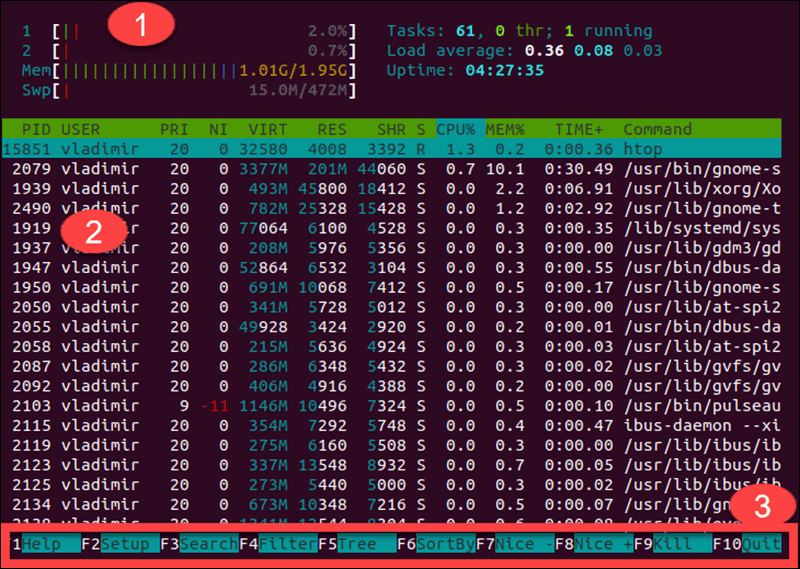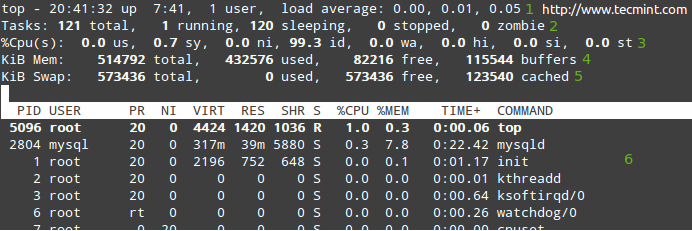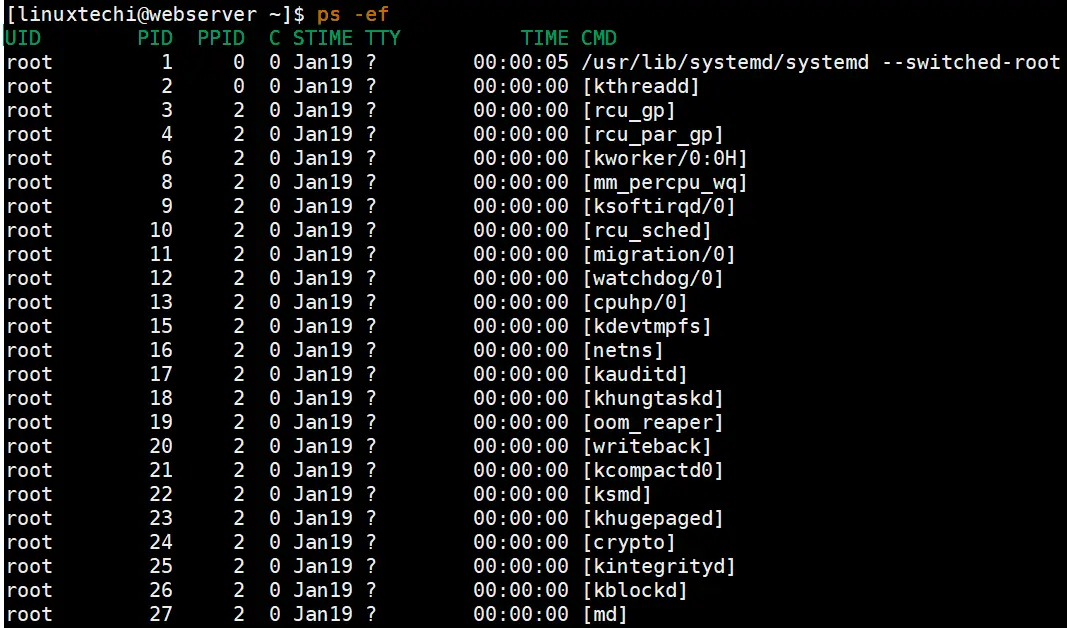

- #Check running processes linux command line how to#
- #Check running processes linux command line mac os x#
- #Check running processes linux command line install#
For processes that run in the background, you can always get their execution time using ps command.Probably the most useful tool to check and kill processes is called Terminal, which is an application that provides access to the lower levels of the Mac OS X operating system and files. The first method is ideal for interactive processes.
#Check running processes linux command line how to#
Now you know how to get the Linux Process execution time on Linux.

The actual execution time is 2.059 seconds. Let's do one more, a ping to 8.8.8.8 # time ping -c 3 8.8.8.8 # time du -sh /root/įrom the output, the actual time the command took to execute is 0m0.007s. The elapsed real time between command invocation and termination.Ĭonsider the below example to check disk usage of /root directory.
#Check running processes linux command line install#
You can install it if missing on Ubuntu system using: $ sudo apt-get install time The time command reports how long the command took to execute on a Linux system. STARTED -> The time the process was initially startedĮLAPSED -> Total running time of the processĬOMMAND -> Process executed command Using time command on Ubuntu If the type is elapsed-line or elapsed-total, this option is ignored. f | -format="format": Format the absolute timestamp, using PHP date format strings. By default, gnomon will display the seconds elapsed between each line, but that is configurable.Įlapsed-line: Number of seconds that displayed line was the last line.Įlapsed-total: Number of seconds since the start of the process.Įxample: $ ping -c 3 8.8.8.8 | gnomon -type=elapsed-totalĠ.0049s PING 8.8.8.8 (8.8.8.8): 56 data bytesĠ.2336s 64 bytes from 8.8.8.8: icmp_seq=0 ttl=59 time=46.288 msġ.2798s 64 bytes from 8.8.8.8: icmp_seq=1 ttl=59 time=35.811 msġ.2801s 64 bytes from 8.8.8.8: icmp_seq=2 ttl=59 time=80.783 msġ.2805s 3 packets transmitted, 3 packets received, 0.0% packet lossġ.2821s round-trip min/avg/max/stddev = 35.811/54.294/80.783/19.213 ms It will indicate how long the process took to execute. To prepend a timestamp to each line, you need to pipe the command to gnomon. usr/local/bin/gnomon -> /usr/local/lib/node_modules/gnomon/bin/gnomonĪdded 56 packages in 13.076s Using Gnomon

Once you have npm tool present on your Linux system, then proceed to install them using: $ npm install -g gnomon

Since Gnomon is a tool written in Node.js, you need Node.js installed on your system so that you can install gnomon with npm package manager. This tool is useful for long-running processes where you'd like a historical record of what's taking so long. Gnomon is a utility used to annotate console logging statements with timestamps and find slow processes on a Linux system. Let's look at the top tools that you should try out for this. Have you been wondering how you can find an execution time of a process in a Linux or Unix system? This guide will show you a number of tools that comes in handy when trying to find the execution time of a process in Linux.Īt times you may have to work on slow executing processes or having slow internet or running a program that you need to track its execution time.


 0 kommentar(er)
0 kommentar(er)
